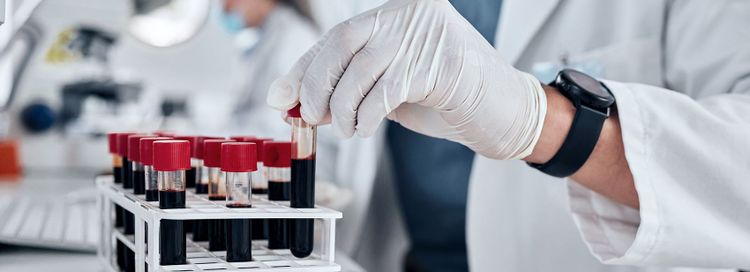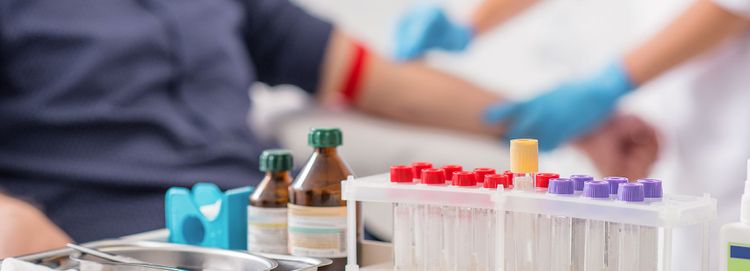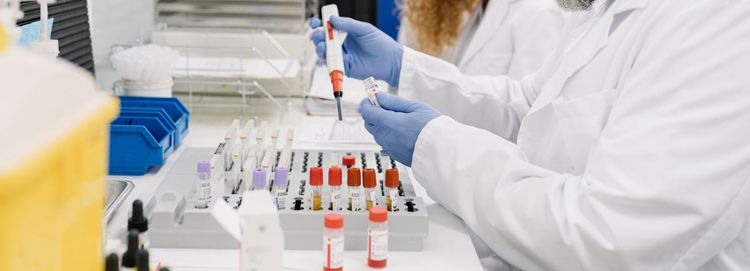February 19, 2021
My friend (who does not like being dictated to about what he must do concerning COVID-19 prevention) asked me, “Exactly why do you have to wear a face covering on a flight when everyone has documented negative results within 72 hours?”
Let me explain here why masks are needed, even if “everyone” has been tested and you believe you are in a “safe” situation. This hypothetical example will illustrate the tangled mess of interconnected features of the COVID-19 virus (SARS-CoV-2), the PCR test, and the difficulty of keeping people safe in this complex environment.
A Sample COVID-19 Infection Timeline
Day 0 at noon: Inoculation

You are exposed to someone with asymptomatic COVID-19 who has a high SARS-CoV-2 viral titer in their nasopharynx (unbeknownst to that person or you), and this cause of COVID-19 infects you. You have been “inoculated” and are at the start of your COVID-19 infection (Day 0). This means enough SARS-CoV-2 particles necessary to establish a COVID-19 infection have been transferred to your nasopharynx and the upper respiratory tract.¹
Day 1 at noon: The Pre-flight Test
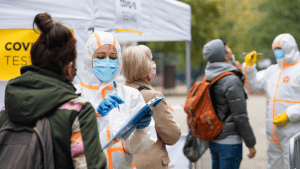
You are swabbed for a PCR test in anticipation of a long, 7-hour international flight that requires pretesting documentation within 72 hours of getting on the plane. However, the COVID-19 tests are not sensitive enough to pick up a Day 1 level of infection. Not enough viral load has been developed to convert the COVID-19 PCR test or a rapid test to positive (virus detected).
Day 2 and Day 3: Viral Multiplication
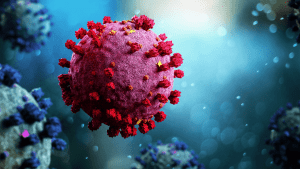
You remain “asymptomatic” even though you are manufacturing millions of new SARS-CoV-2 virus particles in your upper respiratory tract. You are in the 72-hour window of limited infectivity. The COVID-19 test sensitivity to pick up this limited viral load increases daily, but testing still would report a lot of ‘false negatives’ even though you are infected.
Day 3 at noon: Test Results
Your PCR test from Day 1, 48 hours ago, comes back “Not Detected,” despite your infection having occurred on Day 0. The reason for this is that the PCR test sensitivity to appropriately read out positive (+) or detected is very low on Day 1 of infection. The sensitivity and accuracy of the test are best when performed on days 5, 6, or 7 after exposure.2
Because you did the test 1 day after you were unknowingly exposed to COVID-19, when the PCR test sensitivity is <5%2, you now have a false negative PCR test result. You send your negative COVID-19 test to the airlines 24 hours ahead of the flight, confident that you do not have COVID-19 because you have no symptoms and a negative PCR test. In fact, you are a walking asymptomatic case entering the peak period of spreading the infections to others from Day 4 to Day 8.3
Day 4 at noon: Infection Spread
You find your seat on the airplane, confident that you are COVID-19 free as are all others around you because of the universal rule requiring a COVID-19 negative (-) test within 72 hours of boarding the plane. Everyone on the flight feels as safe as a baby in a warm crib, so no one feels they need to wear masks.
You spend the next 7 hours in a sealed steel tube (the jet passenger area) with a very small volume of space versus number of passengers (volume to passenger ratio). The exposure period of 7 hours is 28 times the known time frame of 15 minutes required to effectively exchange the virus and cause infectivity in close quarters.4
The final result: you infect 6 other passengers who are also not wearing masks. After you arrive at your destination, those passengers go on to infect 6 others, each over the next 7 days. That second generation of 36 infected individuals goes on to infect 6 each, and so on.
As they say, “It was a super flight!” Yes, it was—a super-spreader event.
Flight Safety Tips During the COVID-19 Pandemic
Before you go to the airport:
- Consider pre-flight COVID-19 viral testing before you transfer to a new area, especially if you are seeing friends, colleagues, or family. You do not want to be “that person” who imports the virus to a new area and new group of people. Country-to-country travel frequently requires the more accurate PCR test, and this test usually requires a couple of days to get documented results.
- If you don’t have enough time to wait for PCR results, you can complete a rapid test just hours before going to the airport. A negative rapid test is quite accurate for giving the “thumbs up” to get on the flight. A positive rapid test in an asymptomatic person requires the PCR test to confirm whether the rapid test was a false positive or a true positive.
- Go to https://cv19Dashboard.org and check the prevalence of COVID-19 defined as the Local Risk Index in the location(s) you are visiting. Just like you check the weather forecast of where you are going, check the “forecast likelihood” of bumping into someone in public with COVID-19.
In the airport and on the flight:
- Always wear a mask from the time you leave the house—in the cab ride to the airport, in the terminal, in lines, and the entire time on the jet. Remember new federal regulations now require masks in any transportation-related environment.
- Wash your hands, and keep your distance in lines.
- On the jet, open your air vents and point them to blow the air straight down to the floor just in front of your face and nose. There are open vents on the floor sucking air into the on-board air filtration system with rapid air exchange throughout the jet.
References
- To, MD, Kelvin Kai-Tang, et al. “Temporal profiles of viral load in posterior oropharyngeal saliva samples and serum antibody responses during infection by SARS-CoV-2: an observational cohort study.” The Lancet Infectious Diseases, Volume 20, Issue 5, pages 565-574, May 1, 2020. https://www.thelancet.com/journals/laninf/article/PIIS1473-3099(20)30196-1/fulltext
- Schive, Kim. “When should I be tested?” MIT Medical, July 17, 2020. https://medical.mit.edu/covid-19-updates/2020/07/when-should-i-be-tested
- Parker-Pope, Tara. “Why days 5 to 10 are so important when you have coronavirus.” The New York Times, published April 30, 2020; updated November 18, 2020. https://www.nytimes.com/2020/04/30/well/live/coronavirus-days-5-through-10.html
- Centers for Disease Control and Prevention. “Contact Tracing for COVID-19.” Updated December 16, 2020. https://www.cdc.gov/coronavirus/2019-ncov/php/contact-tracing/contact-tracing-plan/contact-tracing.html.



